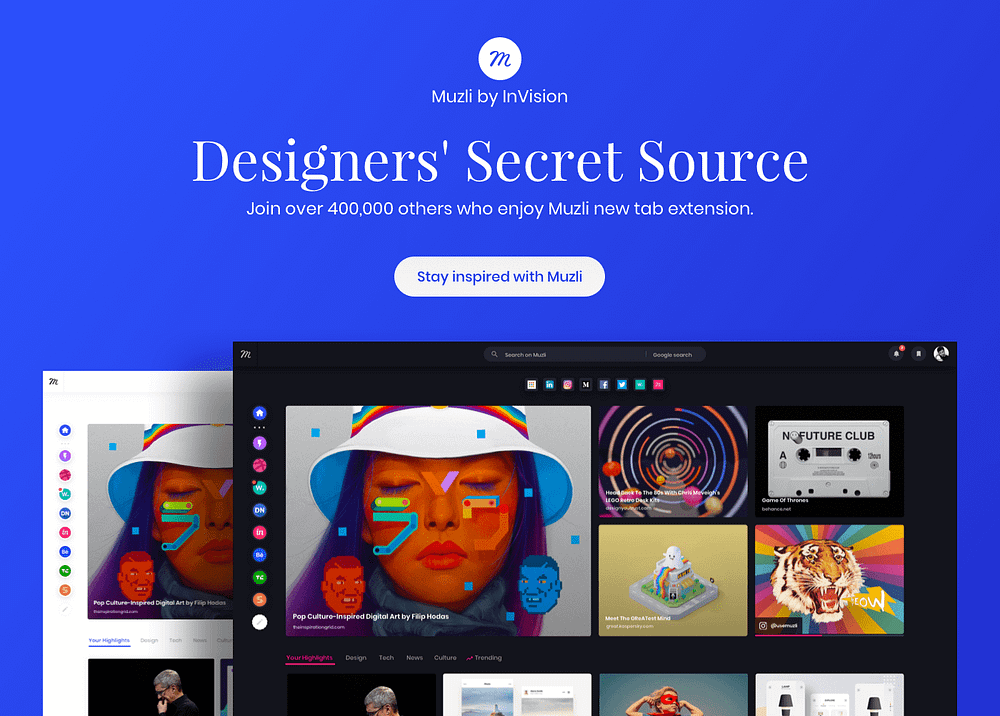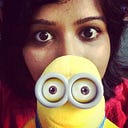
6 things I know about UX/Product Design portfolio
Hi everyone,
Since I posted my last article ‘My Google Interview Experience (UX Design)’, I have received ton of queries about creating a UX portfolio. Most of the queries were quite similar in nature.That’s what lead me to writing this. In this article, I will try to share my learnings about creating a portfolio and what helped me in my journey to FAANG. Portfolios can be daunting. But don’t worry, we will nail this together! 🤝

1. Which skills should you highlight in your portfolio?
Before diving into specific projects, take a step back and think about what skills you want to highlight in your portfolio.

Start by writing down your strengths and weaknesses. Think of a couple of skills such as Research, Interaction, Prototyping, Visual, Motion Design etc. There could be many more. Give yourself a rating out of 5 for each category.
You got your numbers? if not just pause for 5 mins, hydrate yourself, come back and give yourself a rating. Do it! 🥸
Hey, Welcome back. Let me try to illustrate this. Let’s assume a hypothetical reader named ‘Hugsy’ gave himself the following ratings-
- Research- 3/5
- Interaction- 4/5
- Visual- 3/5
- Motion Design- 1/5
- UX Writing- 1/5
So our friend Hugsy apparently thinks that he is good at interaction design and bit of research & VD. He is working on the other parts of his skills. Awesome! However let’s just assume he has a very little time to prepare for his portfolio. What should Hugsy focus on? Well, three things to consider here apart from the constraint, i.e., time.
a) Who will see his portfolio (which organisation, what do they do, why Hugsy will be a good fit)?
b) What role is he applying for (Research/Interaction/Visual/Motion)?
b) What is he trying to communicate through his portfolio?
In this hypothetical scenario, Hugsy should focus on his strengths. That means-
- Flaunt his interaction design skill, with multiple idea generation, critical user journey (CUJ) and prototyping.
- Showcase his research skill — how did he broke down the problem statement, how did he validate his assumptions, thought process and arrived at the final solution.
- Show his visual design skill in presenting few final mockups following brand guidelines (if there are no guidelines Hugsy should document his rationale behind color palette selection/logo ideas/typography etc.)
- Sprinkle some of his secondary skills like ‘Motion Design’ or ‘UX Writing’ but not focusing too much on that.
We don’t want Hugsy to miscommunicate with the recruiter or interviewers. Similarly, if your primary skill is Research or VD, go flaunt those. 🤘
💡Tip: Portfolio is the differentiating factor in getting a hire decision. Take your own sweet time to build it. Once ready, start applying to jobs. Don’t rush it! Note, if you are a Researcher applying for Interaction Designer role, it is implied that you should have a good portrayal of your design process, data driven design decisions and end solution in your portfolio.
2. How many projects/case studies to keep in your portfolio?
We all have this question, don’t we! 😐 Remember just one thing “Quality over quantity”. Ideally speaking, one should have at least 3–4 projects/case studies in their portfolio.
Let me share some secret tips from my experience. 🤓
- Keep 2 if you feel those case studies are awesome, you don’t have to go overboard and end up adding bunch of projects which are okay-ish.
- For juniors, if you have just 1 project, go with it. Make sure it is awesome!
- Try to open your presentation with the best work you have.
- The best number, as per me, is 3. Keep a ‘meaty’ project as the first one where you flaunt all of your skills (research, interaction, visual design and motion design). The second one can be a feature enhancement where you worked on a small piece of project (redesigning notification UI, enhancing onboarding flow etc.) The third project/case study can be anything (show your passion here, go crazy!)💪
- Add meaningful images from the project. A picture is worth a 60,000 words!
- Most importantly, tell a story. Nobody cares about your flow chart, final mockups, bunch of napkin sketches. Design your portfolio in a way that it feels like you are telling a story. It requires practice but it will help your portfolio to shine among billions of other’s, I promise 😇.
💡Tip: Watch Richard Turere’s TED talk and understand how he tells a story about the solar-powered solution he designed to safely scare the lions away.
3. What kind of projects/case studies should you keep?
No hard rules on the domain. However try to keep real-life projects (preferably the ones which has gone live) in your portfolio.
4. What if you don’t have a real-life project?
I totally understand. Specially for aspiring designers this is a challenge but we are the lot who take up challenges and smash them right?! 😎
- You can go for an internship and get your hands dirty on some real-life projects.
- There are many of Non-profit/charity which require design support, pro-bono. You can help them and in exchange add those projects in your portfolio. Volunteering is a great way to add projects! (ivolunteer, https://marvelapp.com/blog/designing-cause-one-stop-guide-best-volunteering-sites/)
- Join a hackathon online.
- Network with people over LinkedIn. Ask if they need design help. Be proactive!
- I have even heard people buying domains for fake companies. Designing product for them and uploading those in the website. I don’t recommend this but hey who knows!
5. Your project has NDA/you just have final screens, what shall you do?
Two words for this- ‘Reverse Engineer’. I completely understand your situation. Trust me, this is a very common scenario. Even I have found myself in such similar situation at times.

- If you have NDA, please don’t include the work as it is. Rather, modify your work i.e., blur/grey out the confidential data, change the color of the screens…keep it very generic. (Talk to your TL, PM before adding the project in your portfolio.)
- If you were in a rush or it was a project demand to deliver only screens and most of your R&D work was done on paper/miro/notion/brain, it is time to curate those and form a story. Give them life and start reverse engineering your project. Feel free to stitch in additional sections if that makes sense (storyboarding, card sorting, affinity mapping etc.).
- Get a whiteboard (or use virtual tools), sticky notes, pen&paper, digital tools whatever you need to compose your case study.
💡Tip: Do what you would have done, if you were to follow your design process and come to the conclusion.
6. How should you share your portfolio?
Who is your target audience for the portfolio? If you just want to share your work with the world, feel free to curate those in sites like Dribbble, Behance or even make your own website.
However, if you are applying for a job chances are recruiters/interviewers won’t have much time to skim through all of that. You don’t want them to assume which one is your best work and what are your strengths either. So what shall we do?
- Build an online portfolio where you put all your favourite work. You can even categorise like UX case studies/UI work/Logo Design/Prototypes, however you want to.
- Prepare a slide deck/presentation for interviews. It should be very specific to the role that you are applying for. If you are applying for different roles (researcher and interaction designer) you may prepare different slide decks focusing specific skills.
- For ‘Portfolio Presentation’ round slide deck is ideal. It will help you practice storytelling, time-bound presentation etc.

Bonus Tips/My Learnings
- Adding videos in your portfolio presentation is a cool thing you can do. Make sure it is not distracting. It should add value to your work.
- Each case study should contain these generic things apart from core work- a) Context, b) Team structure, c) Your role in the project, d) Timeline, e)Problem statement, f) KPIs (how did you measure the project success), g) What did you learn, h) What you could have done differently.
- Before your interview, practice your presentation. Keep it under 30–35 minutes if possible.
- You need to have some work in your portfolio which is out-of-the-box, which defies the status quo (specifically for FAANG).
Hope this article helps in your portfolio preparation. Road may seem long, but take it one step at a time. Create that killer portfolio. Good luck! 😎
Special thanks to
Prerna Pradeep for helping me with her brilliant editorial skill and Uma Sankar Nayak for his review. 😇
Previous articles
- My Google Interview Experience (UX Design)
- My journey of becoming a self-taught UX Lead from a Web & Graphics Designer
- Design with me: VUI Chatbot Design
- Handbook for chatbot design


